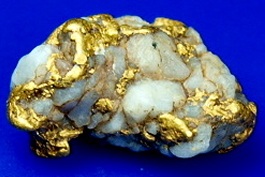Mungoman
Mostly harmless...
- Joined
- Feb 25, 2010
- Messages
- 3,270
- Location
- In the Bush (Peak Hill, NSW)
An errant thought...When faceting gems - diamonds and those of the corundum family, they use an interface or 'lap' of softer material - these can range from steel, through copper and down to leather - the most important aspect of this process is the cutting powder, which is inevitably diamond dust, so, The Ancients, could they have used a straight edged material, like a taut rope or string, combined with diamond grit and mastic to cut such stone.
On watching the video above, the narrator stated that basalt is the type of rock that was chosen to be the raw material for the building blocks. Basalt has a hardness of 7 (Moh scale of hardness) - it also, if you know your rock, can be predictable in it's fracture - looking at the dressed stone in the walls - they seem to have a not exactly smooth facing, which could have been dressed with cobbles of rock that are a degree tougher on the Moh scale.
The issue here is the beautiful mating of the joints, which is where the diamond dust might have come into it's own as the highly angular block which was pointed out, has a common width, but a convoluted depth.
The convoluted varying depths of that one specific building block looks as if they have been dressed with a harder stone (peigning) after being roughed out in the quarry, while the mating surfaces could have been produced by the action and abrasiveness of diamond dust impregnated rope, held together with mastic - as I originally said, just an errant thought on an early Sunday afternoon.
On watching the video above, the narrator stated that basalt is the type of rock that was chosen to be the raw material for the building blocks. Basalt has a hardness of 7 (Moh scale of hardness) - it also, if you know your rock, can be predictable in it's fracture - looking at the dressed stone in the walls - they seem to have a not exactly smooth facing, which could have been dressed with cobbles of rock that are a degree tougher on the Moh scale.
The issue here is the beautiful mating of the joints, which is where the diamond dust might have come into it's own as the highly angular block which was pointed out, has a common width, but a convoluted depth.
The convoluted varying depths of that one specific building block looks as if they have been dressed with a harder stone (peigning) after being roughed out in the quarry, while the mating surfaces could have been produced by the action and abrasiveness of diamond dust impregnated rope, held together with mastic - as I originally said, just an errant thought on an early Sunday afternoon.



 tempering is often seen as an early stage down the metallurgy/metal working route. Can I find a reference? of course I flippin can't.....
tempering is often seen as an early stage down the metallurgy/metal working route. Can I find a reference? of course I flippin can't.....